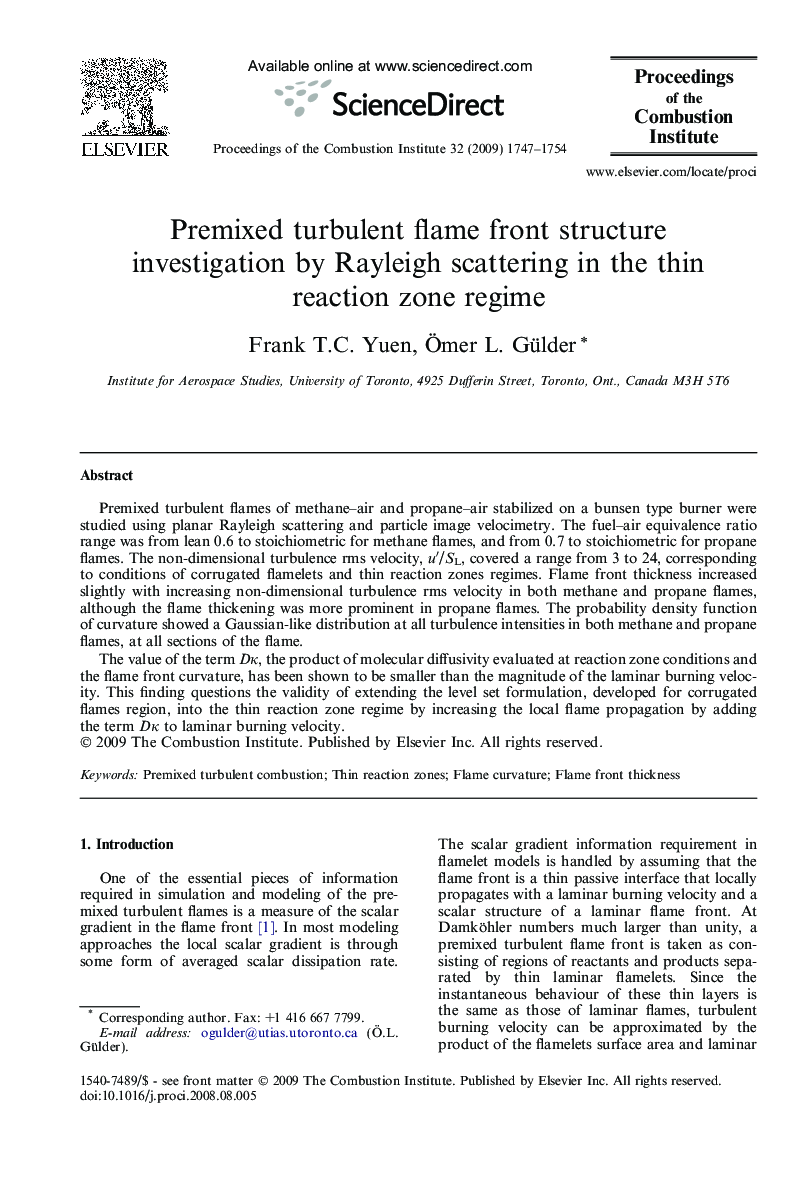| Article ID | Journal | Published Year | Pages | File Type |
|---|---|---|---|---|
| 241022 | Proceedings of the Combustion Institute | 2009 | 8 Pages |
Premixed turbulent flames of methane–air and propane–air stabilized on a bunsen type burner were studied using planar Rayleigh scattering and particle image velocimetry. The fuel–air equivalence ratio range was from lean 0.6 to stoichiometric for methane flames, and from 0.7 to stoichiometric for propane flames. The non-dimensional turbulence rms velocity, u′/SL, covered a range from 3 to 24, corresponding to conditions of corrugated flamelets and thin reaction zones regimes. Flame front thickness increased slightly with increasing non-dimensional turbulence rms velocity in both methane and propane flames, although the flame thickening was more prominent in propane flames. The probability density function of curvature showed a Gaussian-like distribution at all turbulence intensities in both methane and propane flames, at all sections of the flame.The value of the term Dκ, the product of molecular diffusivity evaluated at reaction zone conditions and the flame front curvature, has been shown to be smaller than the magnitude of the laminar burning velocity. This finding questions the validity of extending the level set formulation, developed for corrugated flames region, into the thin reaction zone regime by increasing the local flame propagation by adding the term Dκ to laminar burning velocity.
